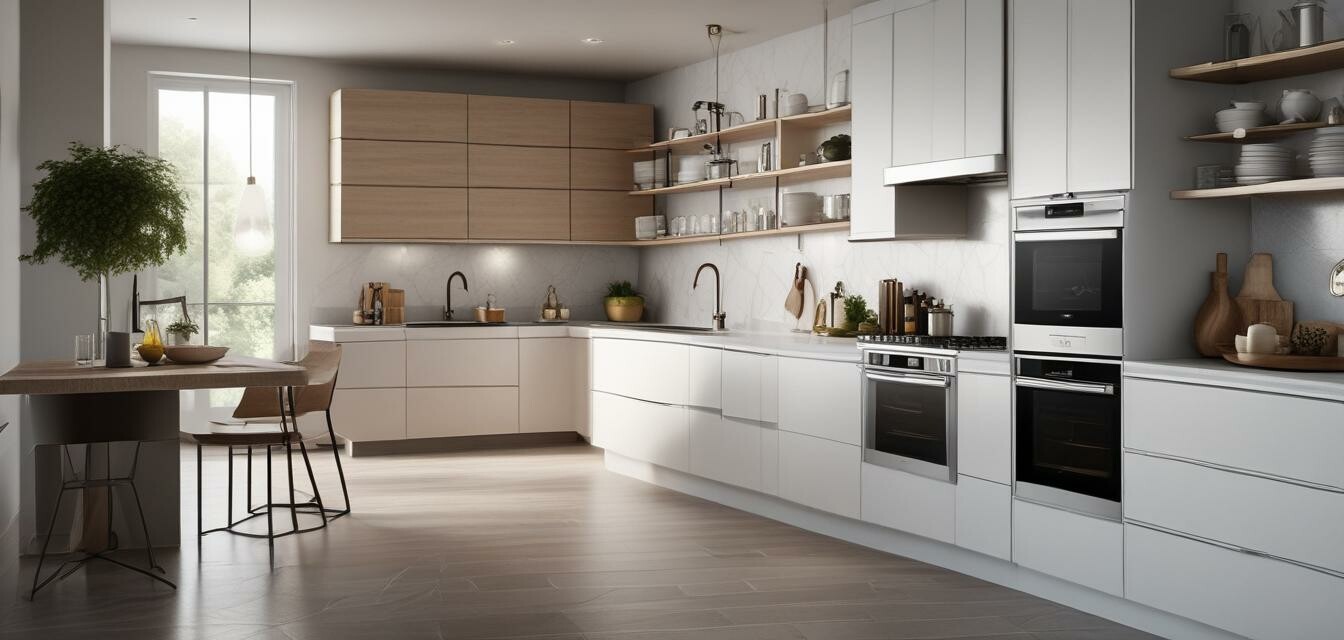
Best Practices for Setting Up a Smart Kitchen
Integrating smart appliances in your kitchen can transform your cooking and dining experience, making it more efficient and enjoyable. This guide explores best practices for seamlessly setting up your smart kitchen, ensuring that all devices work in harmony.
- Choose devices that are compatible with each other for easy integration.
- Prioritize your needs to select the right appliances for your lifestyle.
- Stay updated on technology trends to ensure your kitchen remains future-proof.
- Consider the layout and design for optimal functionality.
- Utilize smart home automation systems to control devices effectively.
Understanding the Smart Kitchen Concept
A smart kitchen represents the integration of technology with traditional kitchen elements to create a connected environment. This involves using smart appliances that can be controlled through apps or voice commands, enhancing convenience and efficiency.
Key features of a smart kitchen
- Remote control of appliances
- Energy monitoring
- Automated cooking processes
- Integration with home systems
Step-by-Step Guide to Setting Up Your Smart Kitchen
To ensure a successful setup, follow these best practices:
1. Choose compatible smart appliances
Start by selecting devices that can communicate with one another. Here are some categories to consider:
| Appliance Type | Features | Example Use Cases |
|---|---|---|
| Smart Ovens | Programmable, remote access, recipe sharing | Baking, roasting, meal preparation |
| Smart Refrigerators | Inventory tracking, temperature control | Food management, energy savings |
| Bluetooth-Enabled Appliances | Wireless connections, app control | Cooking assistance, monitoring |
| Touchless Faucets | Hands-free operation, water conservation | Food prep, hygiene enhancement |
2. Prioritize your kitchen needs
Consider what you cook most often and select appliances that best fit your cooking style. Some things to think about:
- Frequency of cooking and meal prep
- Number of household members
- Types of dishes you frequently prepare
3. Plan your kitchen layout
Your kitchen layout is crucial in setting up smart appliances to promote efficiency. Key points to remember:
- Maintain good access to kitchen zones (prep, cook, serve)
- Group related appliances for easier workflow
- Leave space for manufacturer recommendations for appliances
4. Implement smart home automation
Utilizing a smart home hub can help manage all your appliances from one platform. This can include:
- Voice-controlled commands
- Scheduling features for energy efficiency
- Alerts for maintenance or updates
5. Stay updated with technology trends
The smart kitchen landscape is constantly evolving. Regularly check for:
- New software updates for your devices
- Emerging technologies and features
- Compatibility improvements with existing appliances
Managing Your Smart Kitchen
Once you have your smart kitchen set up, ongoing management is vital. Here are a few tips for maintenance:
Tips for maintaining your smart kitchen
- Regularly check for software updates on all devices.
- Keep an inventory of ingredients through your smart fridge.
- Use energy-saving modes to cut down on utility costs.
- Make adjustments to your setup based on ease of use.
Conclusion
A well-integrated smart kitchen can significantly improve your cooking experience. By selecting compatible appliances, planning your layout effectively, and staying informed about technology trends, you can create a harmonious kitchen environment. For more information on specific smart appliances, check out our Smart Kitchen Buying Guides.
Pros
- Simplifies meal preparation and cooking.
- Enhances energy efficiency throughout the kitchen.
- Increases convenience with remote access.
Cons
- Initial investment may be higher than traditional appliances.
- Dependency on internet connectivity for some features.
- Potential compatibility issues with older devices.
Embrace the smart kitchen revolution and enjoy cooking like never before!